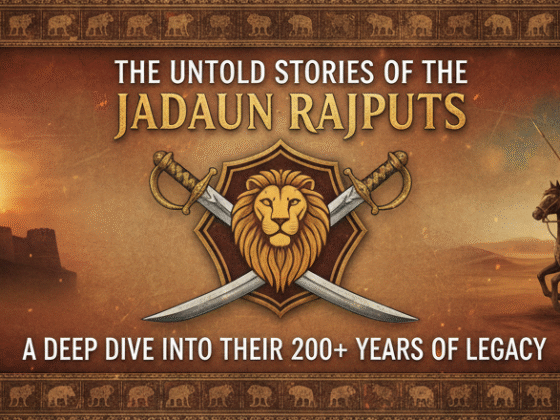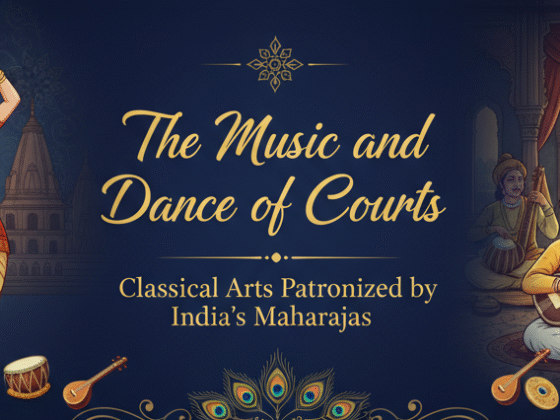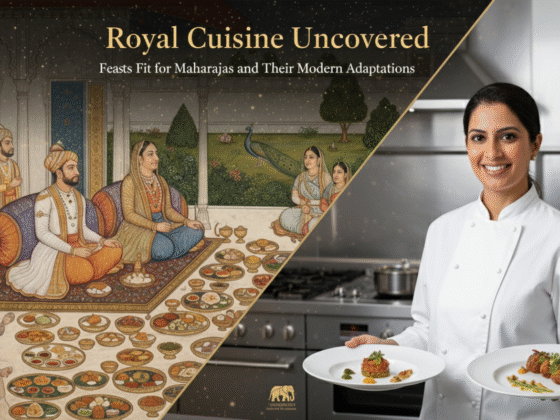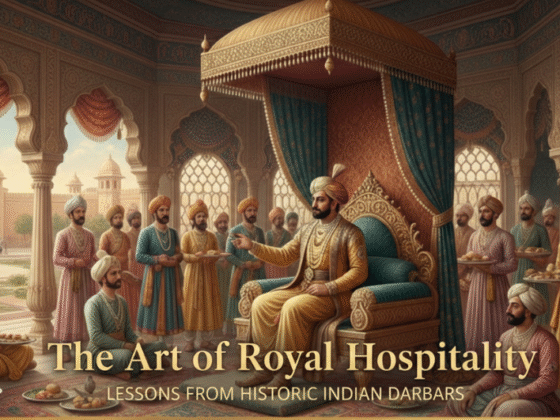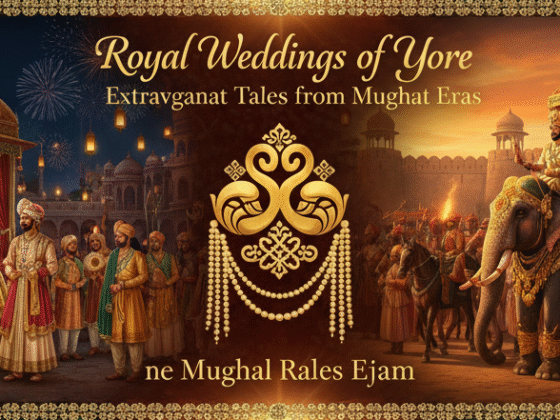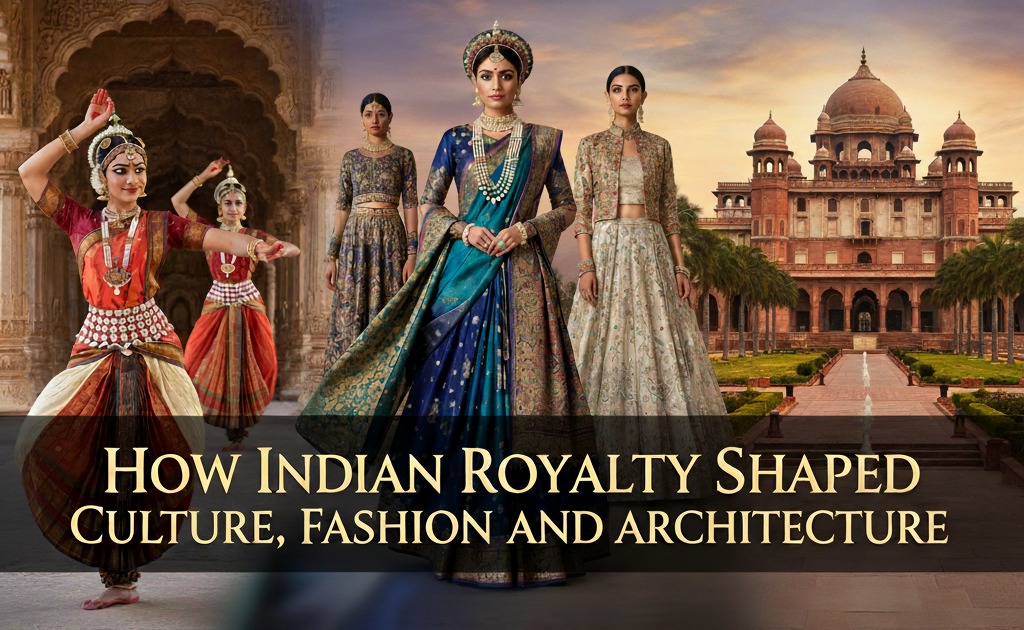
Introduction to Indian Royalty
India’s rich tapestry of history is woven with the threads of its royal past. From ancient kingdoms to modern-day legacies, Indian royalty has played a pivotal role in shaping the nation’s identity. Their influence extends beyond mere governance and into the realms of culture, fashion, and architecture. As we delve into how Indian royalty shaped these vital aspects of life, we’ll uncover stories that celebrate artistry, innovation, and tradition. Get ready to explore a world where majestic palaces stand as testaments to grandeur and vibrant textiles reflect intricate craftsmanship—where every fabric tells a tale!
Influence on Culture:
Indian royalty has long been a beacon of cultural influence. Through their patronage of the arts, royal families supported countless artists, musicians, and writers. This nurturing environment allowed traditional crafts to flourish.
Many art forms we admire today owe their existence to royal sponsorships. Miniature paintings, intricate sculptures, and classical music evolved under the watchful eyes of kings and queens. They not only funded artistic endeavors but also set standards that shaped aesthetic values in society.
Moreover, these rulers played a crucial role in preserving heritage sites across India. Many forts, palaces, and temples stand testament to their commitment to safeguarding history for future generations. Restoration efforts ensured that architectural marvels continue to inspire awe.
The vibrancy of festivals celebrated by royals further enriched India’s cultural tapestry. Their participation brought grandeur and significance to local customs, making them an integral part of community life.
– Patronage of the Arts
Indian royalty has long been synonymous with the flourishing of arts. Their patronage created a vibrant tapestry of creativity that defined epochs.
Kings and queens were not just rulers; they were ardent supporters of artists, musicians, and craftsmen. They commissioned exquisite paintings, intricate sculptures, and grand performances. This enabled various art forms to thrive in royal courts.
With each dynasty came unique styles. The Mughal era introduced detailed miniature paintings while Rajputana brought forward bold colors and themes reflecting valor and romance.
Royal patrons often established workshops where artisans could perfect their craft under the mentorship of skilled masters. This not only preserved traditional techniques but also innovated them.
The legacy of this support is evident today in India’s diverse artistic heritage—from classical dance forms like Bharatanatyam to the enchanting melodies of Hindustani classical music. The influence runs deep, shaping cultural expressions across generations without losing relevance in modern times.
– Preservation of Heritage Sites
Indian royalty played a pivotal role in preserving heritage sites across the subcontinent. Their commitment to safeguarding historical landmarks ensured that generations could experience the rich tapestry of India’s past.
Many royal families established foundations dedicated to restoration efforts. These initiatives not only revitalized old structures but also promoted cultural education and tourism. Stunning forts, palaces, and temples serve as testaments to their dedication.
Moreover, royals often integrated traditional architectural styles into modern developments. This blending created a unique aesthetic that honors history while catering to contemporary needs.
The influence of these preservation efforts is still palpable today. Visitors flock from around the world to marvel at meticulously maintained sites like Hawa Mahal or Mehrangarh Fort, which stand as symbols of India’s regal legacy.
Such endeavors have fostered a sense of pride among locals and instilled an awareness about protecting cultural treasures for future generations.
Impact on Fashion:
Indian royalty has left an indelible mark on fashion, shaping styles that resonate through history. Traditional clothing such as sarees and turbans became symbols of status and elegance under royal patronage.
Jewelry played a vital role in showcasing wealth and artistry. Intricate designs adorned with precious stones reflected the skills of artisans commissioned by kings and queens. Each piece tells a story, passed down through generations.
The influence didn’t stop at traditional attire. Royals introduced new fabrics like silk from China and fine muslin from Bengal, which revolutionized textile production in India.
Foreign influences also melded with indigenous designs due to trade routes established by royals. This fusion created vibrant patterns that continue to inspire modern designers today.
The legacy is visible in contemporary fashion trends, where these timeless elements are reinterpreted for today’s world while honoring their rich heritage.
– Traditional Clothing and Jewelry
Traditional clothing in India reflects a tapestry of history and culture. Each region boasts its unique styles, often influenced by the royal families that once ruled. Sarees, lehengas, and sherwanis are not just garments; they embody stories of grandeur.
Jewelry plays an equally significant role. Indian royalty adorned themselves with intricate pieces made from gold, silver, and precious stones. These jewels were symbols of status and wealth but also held cultural significance.
The craftsmanship behind traditional attire is remarkable. Artisans have passed down techniques through generations. The detailed embroidery and vibrant fabrics used in royal attire tell tales of creativity.
Moreover, jewelry design often features motifs inspired by nature or mythology. These elements add depth to each piece, making them not only decorative but meaningful as well.
Today’s fashion still draws inspiration from this rich heritage, showcasing how deeply rooted these traditions remain within contemporary style choices.
– Introduction of New Styles and Fabrics
The influence of Indian royalty on fashion extends far beyond mere aesthetics. They were pivotal in introducing new styles and fabrics that transformed traditional attire into something extraordinary.
As royal courts flourished, so did the demand for opulent textiles. Rich silks, intricate brocades, and vibrant dyes became synonymous with luxury. The exchange between cultures brought innovative materials like velvet and chiffon to India’s fashion scene.
Royal families often sponsored skilled artisans who created stunning garments adorned with detailed embroidery. These pieces told stories through their designs, reflecting both regional identities and the grandeur of royal patronage.
Additionally, the fusion of European styles during colonial times led to unique sartorial blends. This cross-pollination sparked creativity among designers, resulting in clothing that was both regal and contemporary.
Fashion thus evolved into a canvas where tradition met innovation under the watchful eyes of India’s royals. Their legacy still resonates today in modern wardrobes across the country.
Architectural Contributions:
Indian royalty left an indelible mark on architecture that resonates through the ages. Their grand palaces stand as a testament to their wealth and vision. Each structure showcases intricate carvings, sprawling courtyards, and elaborate frescoes.
Cities were meticulously planned with precision under royal patronage. They often featured gardens, water bodies, and public spaces designed for community gatherings. The layout of these cities reflects both functionality and beauty.
Influence extended beyond aesthetics; it also incorporated local materials and techniques. This melding of styles created iconic structures blending different cultural elements seamlessly.
Many modern buildings draw inspiration from this rich architectural heritage, affirming its lasting impact on urban landscapes today. Royal designs continue to inspire architects seeking harmony between tradition and innovation in contemporary settings.
– Palace Design and Construction
Palaces in India are not just structures; they are living narratives of history. Each palace reflects the grandeur and vision of its royal inhabitants. The intricate designs often showcase a blend of indigenous styles and foreign influences, resulting in unique architectural marvels.
Take the iconic Mysore Palace, for instance. Its Indo-Saracenic architecture stands out with detailed carvings and vibrant stained glass windows. Such design elements tell stories of cultural amalgamation.
The layout of these palaces was equally significant. They were strategically placed to offer both defense and aesthetic pleasure, often surrounded by lush gardens that symbolized harmony between nature and royalty.
Materials used ranged from local stone to exquisite marble, enhancing their splendor. These constructions weren’t merely residences but symbols of power, artistry, and cultural richness that continue to inspire modern architects today.
– Influence on City Planning
Indian royalty played a pivotal role in shaping urban landscapes. Their thoughtful city planning prioritizing aesthetics and functionality set the groundwork for many modern cities.
Palaces were often at the center of these developments, surrounded by gardens, water bodies, and public spaces. This approach cultivated a sense of harmony between nature and architecture.
Royalty also considered accessibility. They built roads that connected important sites while enhancing trade routes. These thoroughfares facilitated movement and encouraged economic growth.
The layout often reflected cultural values too. Temples, marketplaces, and residential areas were strategically positioned to promote community engagement.
This meticulous planning left an indelible mark on India’s urban fabric. Many cities still echo this royal influence today, showcasing how foresight can shape generations to come.
Modern Day Relevance:
Modern Indian society continues to celebrate its royal heritage. Festivals and events often showcase traditional practices passed down through generations. These celebrations highlight the enduring legacy of royalty in daily life.
Royal aesthetics have made their way into contemporary design and fashion trends. Designers frequently draw inspiration from regal motifs, blending them with modern elements. This fusion creates a unique style that resonates with both tradition and innovation.
The fascination with Indian royalty is evident in popular culture as well. Movies, documentaries, and literature explore the lives of royals, captivating audiences worldwide. Through these narratives, the rich history of Indian nobility remains alive.
Many luxury brands now incorporate royal designs into their collections, emphasizing opulence and grandeur. This shift not only promotes cultural pride but also showcases how historical influences can create new avenues for expression in today’s world.
– Continued Celebration of Royal Traditions
The legacy of Indian royalty continues to thrive in various forms today. Festivals, rituals, and ceremonies often draw inspiration from royal traditions. These events reflect the grandeur associated with historical kingdoms.
Weddings are a prime example, where couples incorporate regal elements into their celebrations. From elaborate attire to traditional music, the influence is unmistakable.
Moreover, art forms such as classical dance and music have roots in royal patronage. They remain popular among contemporary audiences and serve as reminders of India’s rich heritage.
Heritage walks and cultural festivals now celebrate these age-old customs. Communities come together to honor their shared history while keeping traditions alive for future generations.
In urban centers, fashion shows frequently pay homage to royal aesthetics through elaborate designs inspired by past dynasties. The fascination with royalty transcends time; it captivates hearts even today.
– Incorporation of Royal Aesthetics in Contemporary Trends
Contemporary fashion often draws inspiration from royal aesthetics, blending opulence with modern sensibilities. Designers frequently incorporate rich fabrics and intricate embroidery reminiscent of regal attire. This fusion creates a unique appeal that resonates with today’s audience.
The revival of traditional jewelry is another significant trend. Pieces adorned with precious stones and elaborate designs capture the essence of royalty while complementing current styles. These accessories add a touch of sophistication to everyday outfits.
Architecture also reflects this royal influence. Many new buildings feature elements like domes, arches, and ornate carvings inspired by palatial structures. This blend of old-world charm with contemporary design enhances urban landscapes.
Social events celebrate these traditions too, showcasing vibrant sarees or lavish lehengas at weddings and festivals. The allure of Indian royalty continues to inspire creativity across various domains, leaving an indelible mark on modern culture.
Controversies Surrounding Indian Roy
The legacy of Indian royalty is not without its controversies. While many celebrate the opulence and contributions of royal families, others question their relevance in modern society. The debate over land ownership, wealth inequality, and historical injustices continues to be a topic of discussion.
Some argue that the extravagance displayed by royal families perpetuates elitism. Critics point out that this glamour often overshadows pressing social issues faced by ordinary citizens. The allure of royal heritage can sometimes mask the complexities involved in their histories, including colonization and exploitation.
Moreover, there are conversations about how these dynasties maintain influence today. From political connections to cultural endorsements, certain royal figures still hold sway in various spheres. This duality raises questions about accountability and responsibility among those who represent India’s rich past.
Despite these challenges, Indian royalty remains an integral part of India’s narrative—a blend of admiration and scrutiny woven into the fabric of contemporary society. Their impact on culture, fashion, and architecture is undeniable but calls for a nuanced understanding as we move forward in our appreciation for what they have contributed—and continue to contribute—to India’s evolving story.


